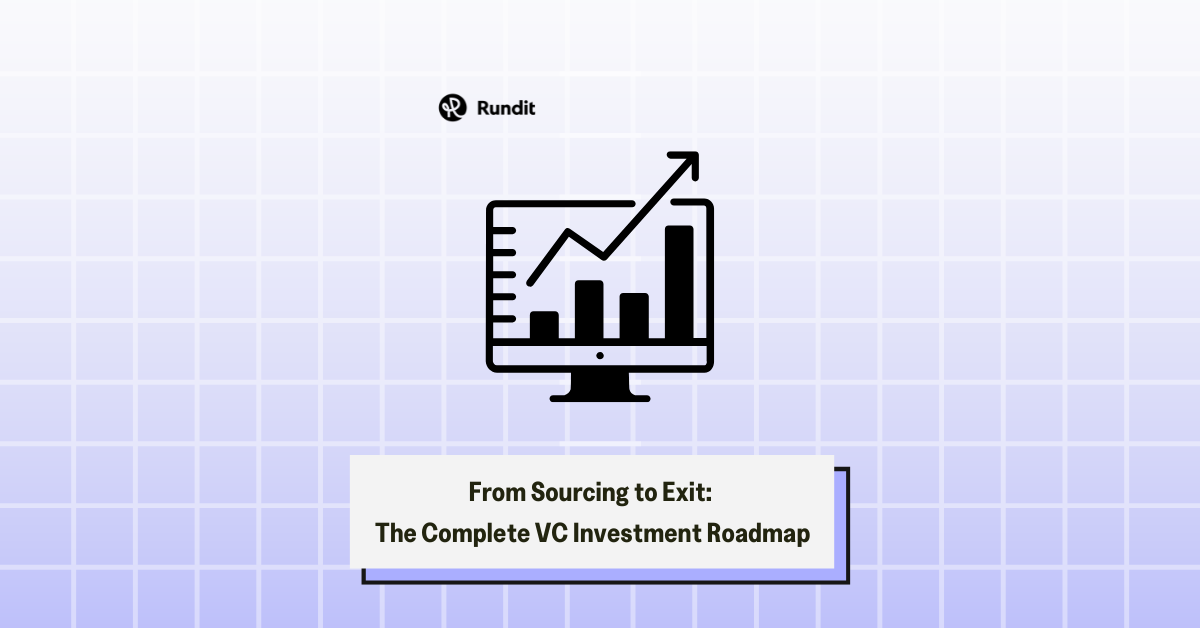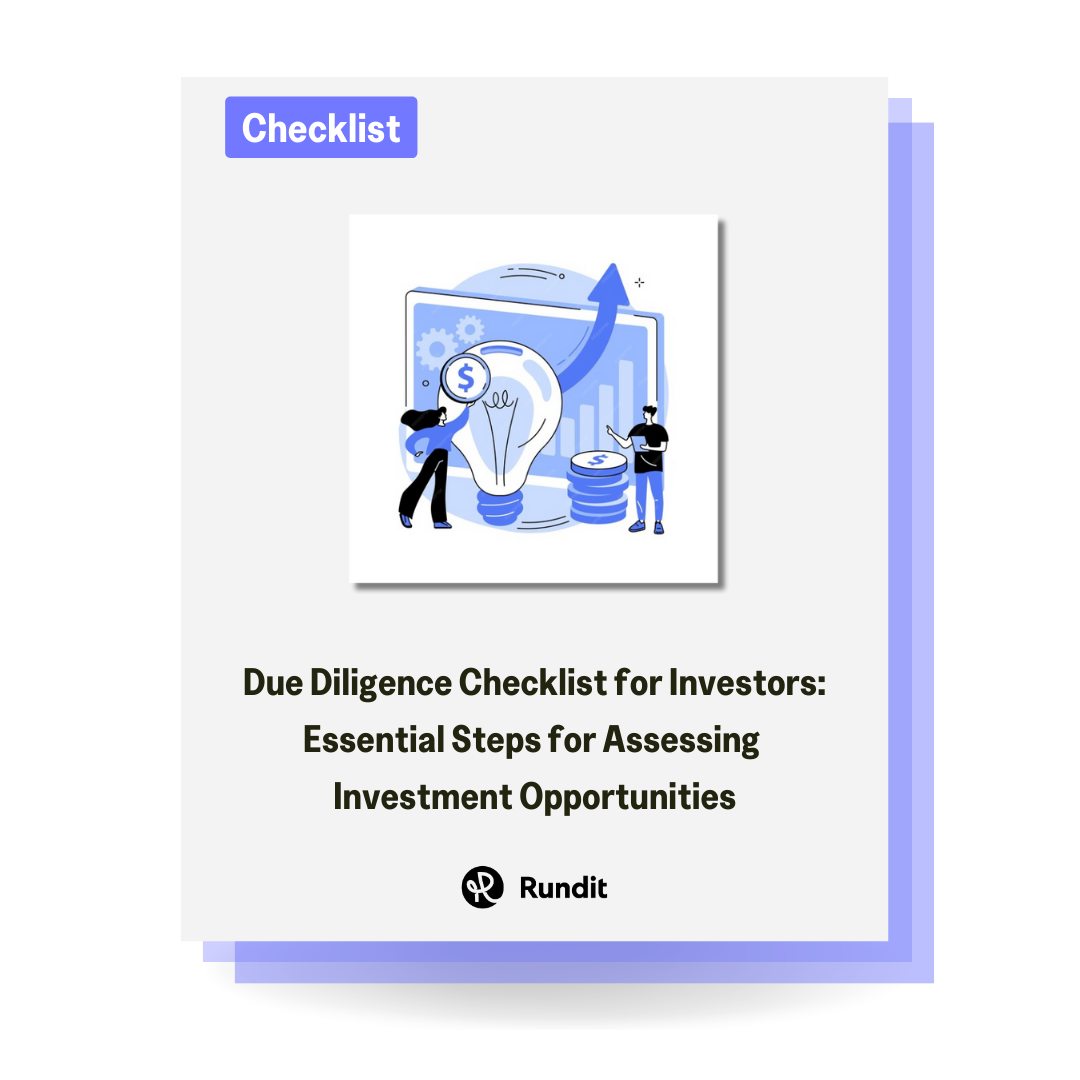
Table of Contents
Venture capital isn’t just about writing checks and hoping for the best. Behind every successful investment is a disciplined process, a journey that starts with a spark of opportunity and ends, ideally, with a game-changing exit. The venture capital (VC) investment process involves several stages, from initial sourcing and evaluation of deals to investment and post-investment management.
Here’s how the path unfolds, from first handshake to final handshake.

Great deals rarely land in your lap. Venture capitalists are always on the move: networking with founders, swapping notes with other investors, and showing up at pitch events and industry gatherings. Some leads come from cold emails or referrals, others from deep dives into emerging sectors. The best VCs keep their ears to the ground and their eyes on the horizon, always searching for the next breakout company.
| Networking | VCs leverage their networks to find potential startups, including connections with entrepreneurs, other VCs, industry experts, incubators, accelerators, and even other portfolio companies. |
| Inbound Leads | Startups often approach VCs directly through cold emails, pitches, or referrals. |
| Events and Competitions | VCs attend startup events, pitch competitions, and industry conferences to identify promising ventures. |
| Research and Market Intelligence | Proactively researching emerging trends, technologies, and sectors to find potential investment opportunities. |
Not every pitch deck makes the cut. The first review is about fit: Does the startup align with the fund’s thesis? Is the market big enough? Is the team up for the challenge? If the answers look promising, it’s time for a first call, a chance to read between the lines and see if there’s real substance behind the slides.
| Reviewing Pitch Decks |
| VCs receive many pitch decks from startups. They conduct an initial review to identify if the startup aligns with their investment thesis (sector, stage, geography, etc.). |

| Quick Assessment |
| At this stage, the focus is on understanding the business model, market size, competitive landscape, team, and potential for growth. |

| First Call or Meeting |
| If a startup passes the initial screening, the VC sets up a meeting or call to learn more about the team and business. |
This is where curiosity turns into scrutiny. Market analysis, product deep-dives, financial modeling, and reference checks are all on the menu. VCs want to know what makes the founders tick, how the tech stacks up, and whether the numbers add up. They’ll talk to customers, partners, and industry insiders to get the full story. It’s part detective work, part risk management, and all about conviction.
Download Due Diligence Checklist for Investors

If the deal still looks good, the VC puts forward a term sheet. This document sets the ground rules: valuation, investment amount, equity, board seats, and all the fine print. Negotiations can be brisk or drawn out, but the goal is always a win-win, alignment that sets the stage for partnership, not just paperwork.
| Issuing a Term Sheet |
| If due diligence is satisfactory, the VC prepares a term sheet outlining the proposed investment terms, including valuation, amount of investment, equity stake, board seats, liquidation preferences, anti-dilution provisions, and other rights. |

| Negotiations |
| The startup and the VC negotiate the terms of the investment. This can take several weeks and may involve legal counsel from both sides. |

| Legal Due Diligence |
| Finalizing any remaining legal checks and preparing for the next stage. |
Big decisions aren’t made in a vacuum. The deal goes to the investment committee, where partners weigh the risks and rewards. They’ll challenge assumptions, stress-test the model, and make sure the opportunity fits the fund’s strategy. Only after the committee signs off does the process move forward.
| Internal Review |
| The deal is presented to the VC firm’s investment committee, composed of senior partners and advisors. The committee reviews all aspects of the deal, including due diligence findings, financial projections, risks, and alignment with the firm’s strategy. |

| Approval Decision |
| The committee decides whether to approve, reject, or request further information or adjustments. This is often the final internal checkpoint before the investment is made. |
With committee approval in hand, it’s time for final checks and legal paperwork. Agreements are drafted, signatures are collected, and at last, funds are wired. The startup gets the capital it needs, and the VC officially joins the journey.
| Legal Documentation |
| Drafting and finalizing the legal documents, such as the stock purchase agreement, investor rights agreement, and other closing documents. |

| Closing the Deal |
| Once all documents are signed, the funds are transferred to the startup, officially closing the deal. |
The real work begins after the deal closes. VCs roll up their sleeves, joining boards, making introductions, and helping founders navigate everything from hiring to growth strategy. Regular check-ins, performance tracking, and follow-on investments keep the relationship active and aligned.
| Board Participation | The VC may take a seat on the board of directors or act as an observer to provide oversight and strategic guidance. |
| Operational Support | VCs often help with hiring, business development, marketing strategies, and further fundraising efforts. |
| Monitoring Performance | Regularly reviewing the startup’s performance against key metrics, financial milestones, and strategic goals. |
| Follow-on Investments | Based on the startup’s progress, the VC may consider follow-on investments in subsequent funding rounds. |
Related article: Venture Capital Follow-on Investment Strategies
Every VC dreams of a great exit—an acquisition, a merger, or an IPO that delivers returns for everyone involved. Planning starts early, but timing is everything. When the stars align, the VC works closely with the founders to execute the exit and celebrate the journey from sourcing to success.
The venture capital investment process is both intricate and dynamic, requiring careful consideration at every stage, from deal sourcing to exit strategy. It’s a blend of instinct and analysis, hustle and patience, partnership and negotiation.
By understanding and refining each step, whether it’s conducting thorough due diligence, negotiating favorable terms, or actively managing post-investment growth, VCs can maximize their chances of success. Staying disciplined and informed throughout the process ensures that investments align with strategic goals, ultimately driving both financial returns and long-term value.
Want to spend less time on spreadsheets and more time on strategy? See how Rundit can help you focus on what matters: finding, funding, and growing the next generation of standout companies. → Talk to Sales.
Additional sources
Investment process and application instructions – Business Finland
The 7 Stages of Venture Capital: From Pre-Seed to IPO – Paro
An Insider’s Look at the VC Investment Funding Process for Startups – Hubspot
Subscribe to our newsletter
Sign up to receive our newsletter for exclusive updates, insights, and exciting news delivered straight to your inbox.